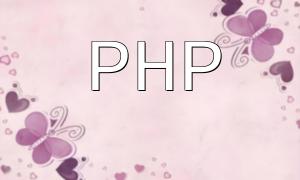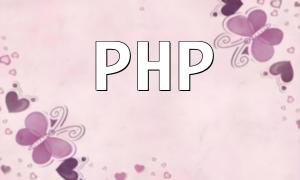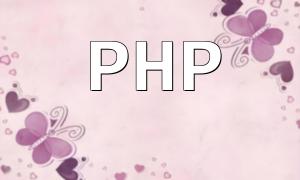Before we start working with JSON in PHP, it's important to understand what JSON is. JSON (JavaScript Object Notation) is a lightweight data exchange format based on a subset of JavaScript syntax. It uses key-value pairs to represent data, making it easy to understand, generate, and parse. JSON is widely used in frontend-backend data exchange, especially in AJAX communication, and has become a standard format for data interchange.
In PHP, we can easily convert an array to a JSON string using the built-in json_encode() function. Below is a simple example of creating a JSON object with two key-value pairs:
$json = array('name' => 'Tom', 'age' => 20);
echo json_encode($json); // Output: {"name":"Tom","age":20}The code above shows how to define a simple JSON object using a PHP array, and then use the json_encode() function to convert it into a JSON string.
In addition to simple JSON objects, you can also create nested JSON objects. By using nested arrays in PHP, you can easily generate more complex JSON data. Here's an example of a JSON object with a nested JSON object:
$json = array(
'name' => 'Tom',
'age' => 20,
'address' => array(
'city' => 'Beijing',
'street' => 'Chang An Street'
)
);
echo json_encode($json); // Output: {"name":"Tom","age":20,"address":{"city":"Beijing","street":"Chang An Street"}}In this example, the address element itself is a nested array, which is then converted into a nested JSON object.
Besides nested JSON objects, PHP also allows you to create nested JSON arrays. Below is an example of a JSON object that contains a nested JSON array:
$json = array(
'name' => 'Tom',
'age' => 20,
'hobbies' => array(
'reading',
'playing games',
'swimming'
)
);
echo json_encode($json); // Output: {"name":"Tom","age":20,"hobbies":["reading","playing games","swimming"]}In this case, the hobbies element is an array containing multiple strings. It will be converted into a JSON array.
In addition to creating simple JSON objects, the json_encode() function also allows us to control the output format through various parameters. The $flags parameter accepts multiple constants that control how the JSON is formatted. Here are some common options:
For example, to generate a formatted JSON object, you can use the JSON_PRETTY_PRINT option:
$json = array('name' => 'Tom', 'age' => 20);
echo json_encode($json, JSON_PRETTY_PRINT); // Output:
// {
// "name": "Tom",
// "age": 20
// }By using this option, the generated JSON string will include newlines and indentation for better readability.
In this article, we've learned how to create nested JSON objects in PHP. By using nested PHP arrays, we can easily build complex JSON data, and with the json_encode() function, we can convert these PHP arrays into JSON format. In real-world development, we can also set different options to generate JSON that meets specific requirements.









